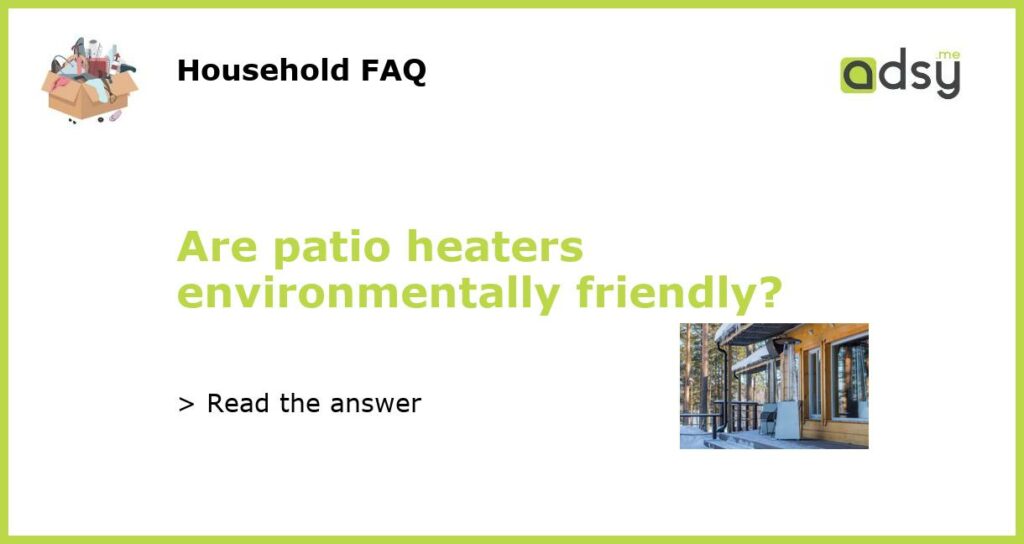Understanding the Environmental Impact of Patio Heaters
As outdoor spaces become increasingly popular for dining and entertainment, patio heaters have become a common sight in restaurants, bars, and private homes. While they provide warmth and comfort in cooler months, it is important to consider their environmental impact. The question arises, are patio heaters environmentally friendly?
The Energy Source: Gas or Electric?
Patio heaters are typically powered by either gas or electricity. Gas-fired patio heaters burn propane or natural gas, while electric patio heaters use electricity to produce heat. The choice of energy source has a significant impact on their environmental friendliness.
Gas-powered patio heaters produce carbon dioxide (CO2), a greenhouse gas that contributes to climate change. Burning natural gas produces less CO2 compared to propane, but both are fossil fuels that release CO2 when burned. In addition to CO2, gas heaters can also emit other pollutants such as nitrogen oxides (NOx) and volatile organic compounds (VOCs), which have adverse effects on air quality.
On the other hand, electric patio heaters do not produce any direct emissions during use. However, the electricity used to power them may come from fossil fuel power plants, which release CO2 and other pollutants. The carbon footprint of electric patio heaters depends on the energy mix in the local power grid. In areas with a high proportion of renewable energy sources, such as wind or solar power, electric patio heaters can be considered more environmentally friendly.
Energy Efficiency Matters
Another important factor to consider when evaluating the environmental impact of patio heaters is their energy efficiency. Energy-efficient patio heaters convert more of the energy they consume into heat, resulting in less wasted energy and lower greenhouse gas emissions.
Gas patio heaters are generally less energy-efficient compared to electric heaters. A significant portion of the heat produced by a gas heater is lost through convection and radiation. Electric patio heaters can achieve higher energy efficiency because they convert electrical energy directly into heat. However, it is important to note that the overall energy efficiency of an electric patio heater also depends on the efficiency of the power generation and distribution systems in place.
Considerations for Outdoor Heating Alternatives
While patio heaters offer convenience and warmth, there are alternative options to consider with lower environmental impact. These alternatives include:
1. EPA-certified Wood-Burning Fire Pits: Fire pits that meet the Environmental Protection Agency’s (EPA) emissions standards can be a sustainable option. It is important to use properly seasoned wood and follow local regulations to minimize emissions and air pollution.
2. Infrared Electric Heaters: Infrared heaters emit heat directly onto people or objects without heating the surrounding air. They use less energy compared to traditional electric patio heaters and can provide targeted heat to specific areas.
3. Solar-Powered Patio Heaters: Solar-powered patio heaters utilize energy from the sun to generate heat. These heaters are more sustainable and have no direct emissions, although their effectiveness may depend on sunlight availability.
Finding the Balance
When it comes to patio heaters, finding a balance between comfort and environmental friendliness is key. Gas-powered patio heaters have a larger direct environmental impact due to emissions, while electric patio heaters’ environmental impact depends on the energy source. Prioritizing energy efficiency and considering alternative heating options can help minimize the impact of outdoor heating on the environment. Ultimately, it is crucial to make informed choices and strive for sustainability in outdoor heating practices.






